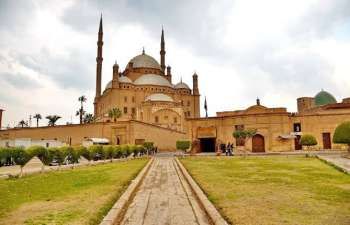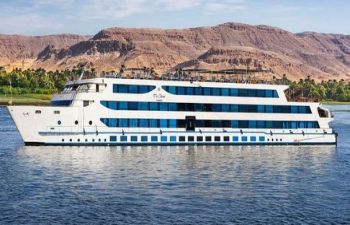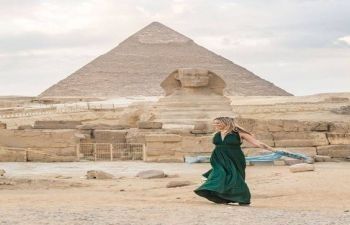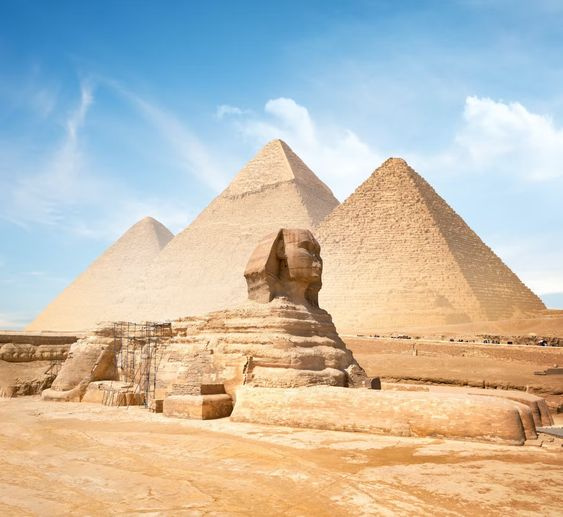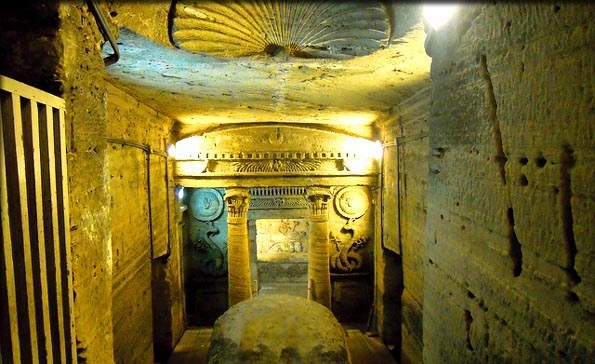Top attractions in Alexandria Egypt
Find top attractions in Alexandria Egypt and Places to visit.Alexander the Great founded it. Queen Cleopatra lorded over it. Alexandria's birth and early history is a calling card of famous names. This was the Mediterranean's dazzling jewel of a city, home to the Great Library of Alexandria and the
Top attractions in Alexandria Egypt
Alexander the Great founded it. Queen Cleopatra lorded over it. Alexandria
's birth and early history is a calling card of famous names. This was the Mediterranean's dazzling jewel of a city, home to the Great Library of Alexandria
and the colossal Pharos Lighthouse — one of the seven wonders of the ancient world. In more recent times, from the late 19th century up until the 1950s, Alexandria
was something of a bohemian bad boy, with a glittering cast of writers, poets, and artists who made the city their home.










BIBLIOTHECA ALEXANDRINA
A re-imagining of Alexandria 's ancient Great Library, this gorgeously designed cultural centre contains a host of museums, as well as one of the modern world's most ambitious libraries. Its architecture — a giant sun disk — presides over the waterfront Corniche, while inside, a huge reading room can hold eight million volumes. Built-in 2002 as a memorial to one of the largest and most important libraries in antiquity, the Royal Library of Alexandria . The old library was burnt down and with the fire, many of its books were destroyed. The modern library may not be as important and rich as the previous one, yet it’s still a large library and a major cultural centre including three museums, four art galleries, a planetary and a laboratory where they rescue and fix old manuscripts. They also have a good section of children’s books which can be fun to explore if you’re on holiday with your kids.
FORT QAITBEY
Fort Qaitbey was built by Mamluke Sultan Qaitbey in an effort to fortify this important Egyptian port from attack.Historically one of the most important defensive strongholds in Egypt and along the Mediterranean Sea coast, the Fort of Qaitbey was an essential chess piece in the security of Alexandria . The fort sits at the entrance of the harbor on the Pharos Island, where it replaced the famous Lighthouse of Alexandria , which was one of the Seven Wonders of the Ancient World. Despite being finally annihilated in a devastating earthquake, remnants of the red brick used in the construction of the lighthouse still remain–a nostalgic reminder of how magnificent it would have looked in its prime time. Nonetheless, the fort is still a sight to feast your eyes on. We recommend strolling to Fort Qaitbey along the Corniche, giving you unforgettable views of the Mediterranean sea.
KOM EL-DIKKA
Kom Al Dikka was a well-off residential area in Graeco-Roman times, with lovely villas, bathhouses and a theatre. The area was known at the time as the Park of Pan, a pleasure garden where citizens of Alexandria could indulge in various lazy pursuits. Although the ruins aren't terribly impressive in scale, they remain a superbly preserved ode to the days of the centurion and include the 13 white-marble terraces of the only Roman amphitheatre found in Egypt.
CATACOMBS OF KOM EL-SHUQQAFA
The Catacombs of Kom el-Shuqqafa are hewn from the rock on the southern slopes of a hill, in the Carmous district. Thought to date from the 2nd century AD, they offer an admirable example of the characteristic Alexandria n fusion of Egyptian and Greco-Roman styles. Discovered in 1900 (thanks to a donkey falling into them) they are laid out on several levels of sarcophagi and loculi (shelf tomb) chambers.A spiral staircase leads down into the ground to the main rotunda. To the right, you can enter the main burial chamber and also the Sepulchral Chapel with 91 loculi, each large enough to accommodate three or four mummies. To the left is a large room known as the Triclinium Funebre, which would have been used for banquets in honor of the dead.
ALEXANDRIA NATIONAL MUSEUM
This excellent museum sets a high benchmark with its summary of Alexandria ’s past. Housed in a beautifully restored Italianate villa, the small but thoughtfully selected and well-labelled collection does a sterling job of relating the city’s history from antiquity until the modern period. Look out especially for the beautiful tanagra – terracotta statues of Greek women – and the discoveries found underwater in the Mediterranean.
THE MONTAZAH PALACE GARDENS
Built in 1892 by Khedive Abbas II, the last Muhammad Ali Dynasty ruler, the palace is a symbol of royalty and lavishness. Its main goal was to hold the Khedive title over the Khedivate of Egypt and Sudan and was also used as a hunting lodge and residence for his companion. Thereby, the sheer luxury in the palace is clearly present. The eccentrically designed Montazah Palace, with its ornate Florentine-inspired towers and Rococo flourishes, is not open to the public, but everyone is welcome to stroll within the sprawling gardens, which can be a welcome slice of nature after a day spent within Alexandria 's hustle. On the coastal end of the park is a small beach with a peculiarly whimsical bridge to a small island.
EL-MURSI ABUL ABBAS MOSQUE
One of Alexandria 's major landmarks, the Abu Abbas al-Mursi Mosque was built in 1796 over the tomb of the 13th-century Sufi holy man Abu Abbas al-Mursi. Originally from Murcia (in Spain's Andalusia region), Abu Abbas became a highly esteemed religious leader in Alexandria , and his teachings are still revered in Egypt. It was redesigned and built by Eugenio Valzania and Mario Rossi between 1929 and 1945. The temple is certainly one of the most beautiful mosques in Egypt as well as one of the most spiritually significant places to go to while visiting Alexandria . Its traditional architecture is stunning and it is located right next to the Citadel of Qaitba
POMPEY'S PILLAR & THE TEMPLE OF SERAPEUM
A massive 30m column looms over the debris of the glorious ancient settlement of Rhakotis, the original township from which Alexandria grew. Known as Pompey’s Pillar, for centuries the column, hewn from red Aswan granite, has been one of the city’s prime sights: a single, tapered shaft, 2.7m at its base and capped by a fine Corinthian capital. The column rises out of the sparse ruins of the Temple of Serapeum , a magnificent structure that stood here in ancient times. Underneath the column, steps lead downward to the ruins of the great temple of Serapis, the hybrid Greek and Egyptian god of Alexandria . Also here was the ‘daughter library’ of the Great Library of Alexandria , which was said to have contained copies and overflow of texts. These scrolls could be consulted by anyone using the temple, making it one of the most important intellectual and religious centres in the Mediterranean.
RAS EL-TIN PALACE
Along Alexandria 's western shore, past the shipyards, you’ll spot Ras El Tin Palace. It is most spectacular seen from the Mediterranean Sea. Originally built in the 1830s for Egyptian ruler Mohammed Ali, it’s now part of a naval base and was an official presidential residence. It was here that King Farouk signed his abdication papers in 1952. Unfortunately it’s not open to visitors.
STANLEY BRIDGE
This bridge offers great panoramic views of the Mediterranean, becoming an even more special place to visit at night. The bridge has a total length of 400 meters. In the area nearby there are many hotels and restaurants. This is a good place to come and enjoy the sea breeze or have a nice walk around before or after dining at one of the restaurants in the area.


